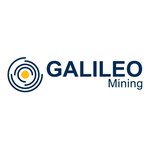Mark Creasy Doubles Down on GAL in $20M Cap Raise (and so did we)
Disclosure: The authors of this article and owners of Next Investors, S3 Consortium Pty Ltd, and Associated Entities, own 2,161,544 GAL shares and the Company’s staff own 14,000 GAL shares at the time of publication. S3 Consortium Pty Ltd has been engaged by GAL to share our commentary and opinion on the progress of our Investment in GAL over time.
It has just been two months since our best performing Investment of 2022, Galileo Mining (ASX:GAL), made a major PGE discovery at its 100% owned Norseman project in WA.
Off the back of the discovery, the share price went from 20c to a high of $2 per share prompting GAL to raise $20.4M.
This type of raise, at a valuation multiples of where the company was before its discovery, is the dream for any early-stage mining exploration company - and as shareholders we think is a great outcome for early investors.
We have been following the GAL story for over two years and recently increased our position in line with the cap raise at $1.20.
The placement was cornerstoned by GAL’s biggest shareholders including mining billionaire Mark Creasy and ASX listed giant IGO Ltd.
And today, a “change in substantial holding notice” showed that Creasy had invested a further $7M into GAL - a strong vote of confidence from the major shareholder.
This wasn't the only buying Creasy was doing.
In the weeks leading up to the placement, Creasy was buying on market for a total of $2.26M at an average share price of $1.48 per share (higher than the current price of GAL).
All of this buying has seen Creasy increase his ownership of the company up to 26.21%.
We remember seeing this sort of buying pressure from Creasy back in 2012-13 when another company he invested in, Sirius Resources, made a new nickel discovery.
Creasy started buying on market off the back of the discovery and maintained a major shareholding in Sirius all the way through to the sale of the Nova nickel discovery to Independence Group for $1.8 billion (now IGO Ltd - who is GAL’s second biggest shareholder).
Creasy’s playbook was not to sell into a new discovery, but to increase his shareholding and see the new discovery grow before an established miner took it out.
This brings us to where GAL is at right now...
Having just completed its second round of drilling, GAL put out assays from its first four holes announcing its highest grade intercept to date.
A one metre intercept which measured 8.25g/t palladium and 1.94 g/t platinum - a palladium grade almost 4x the size of the initial discovery intercept.
In addition to this GAL also confirmed that every single drillhole intercepted sulphides consistent with those intersected in the first round of drilling, including the discovery hole which means that the mineralised sulphide zone now extends:
- Over a 300m strike length in the southern/central sections;
- Over a 200m strike length over the northern sections; AND
- Remains open in ALL directions.
GAL expects assays from this round of drilling to come out in August AFTER the third drilling program commences later this month.
With the capital raise done, GAL should have ~$26.5M in cash to pour into its projects, with the aim of increasing its existing discovery and making entirely new ones.
As GAL makes progress with its PGE discovery we are hoping that the markets will reward shareholders by re-rating its share price as the discovery is more defined.
And we are following the playbook of Mark Creasy and increasing our position in GAL into what we hope is a discovery which multiplies in size and scale.
We have patiently held onto our GAL Investment for two years hoping to see it make a large metals discovery, backing the calibre of the management team and major shareholders behind the company.
This cap raise signals GAL’s transition from the exploration phase to the definition phase for this discovery, and a big achievement for the company.
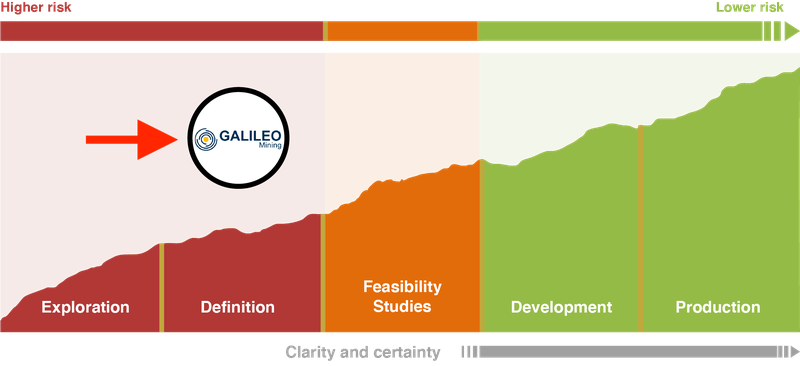
Mining billionaire Mark Creasy buying on market and in the placement
Last week GAL completed a $20.4M capital raise at $1.20 per share.
After coming out of a trading halt for the raise, GAL confirmed that the capital raise was cornerstoned by its major shareholders Mark Creasy and IGO Ltd.
We think that this is a strong vote of confidence from the company’s two largest shareholders to the point that we increased our position in GAL too at $1.20.
More details from Mark Creasy’s investment were revealed in a “change in substantial holding” notices released today.
Details of the investment:
- Mark Creasy cornerstoned the raise purchasing $7M in shares at $1.20 per share.
- Mark Creasy also purchased $2.26M in shares on market before the raise at an average share price of ~$1.48 per share.
In total, since the 16th of June, Creasy purchased almost $9.3M in stock both on market and through the raise. A massive vote of confidence from one of Australia's most prominent mining billionaires.
Before the raise, Mark Creasy owned 24.82% of the company.
Now after his cornerstone investment and the buying on market, Creasy owns 26.21% of GAL.
We think a commitment of this size from a savvy mining magnate like Mark Creasy shouldn't go unnoticed, after all, he was behind Sirius Resources’ $1.8 billion sale of its Nova nickel discovery to Independence Group (now IGO Ltd who is GAL’s second biggest shareholder).
He was also involved in the sale of a 65% interest in the Silver Knight discovery to Independence Group (IGO) for $45M.
Similarly, GAL’s managing director Brad Underwood was also involved in both of these sales.
For context, we looked at Sirius Resources’ Nova discovery to check for similarities between GAL and Sirius.
In July 2012 Sirius made the discovery intercept for what would become the Nova nickel discovery.
Almost immediately, Creasy started buying shares on market and exercised some Sirius options, increasing his ownership from 25.99% to 27.6%.
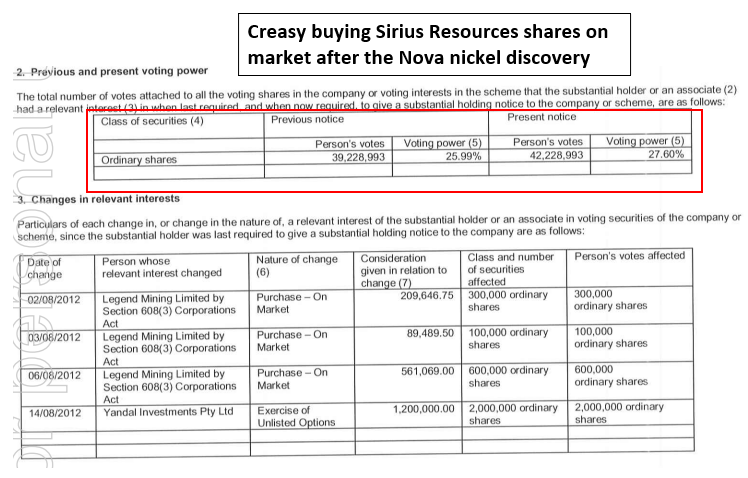
By November of that same year, with Sirius continuously extending its discovery, Creasy continued buying shares on market, totalling $4M.
What is clear is that when Creasy sees potential he continues backing his companies both on market and in capital raises.
This is an interesting investment strategy, rather than banking the profits from the discovery, Creasy doubles down on his high-potential investments like Sirius, ‘letting his winners ride’.
We think there is a good chance that he is doing the same with GAL.
As GAL continues to drill out and prove extensions to its PGE discovery, Creasy continues to increase his ownership interest in the company.
It is far too early to predict what comes of all of this but we too are comfortable increasing our Investment in GAL while the company is cashed up, actively drilling to define the size and scope of its discovery drilling and the company’s biggest shareholder is increasing his holdings.
The calibre of the team and major shareholders was always one of our key reasons for Investing in GAL and now we get to see how this combination of strong fundamentals can lead to company and share price performance.
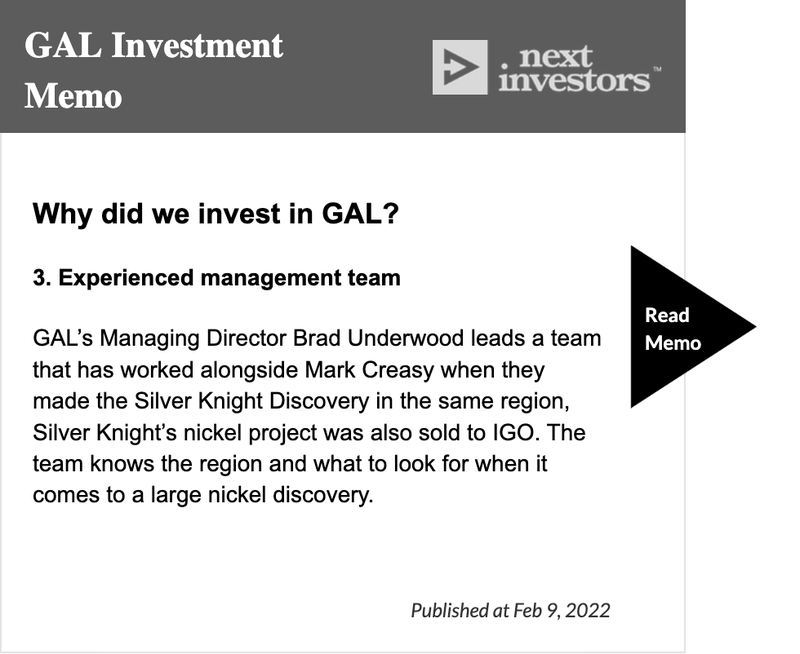
GAL now has around $26.5M in cash, which has been earmarked for drilling and is already being put to work.
The company is planning a third RC drill program that’s scheduled to begin in late July, followed by a diamond drilling program planned in August.
Here’s Brad Underwood discussing the Placement and his plans fo the $20.4M proceeds:
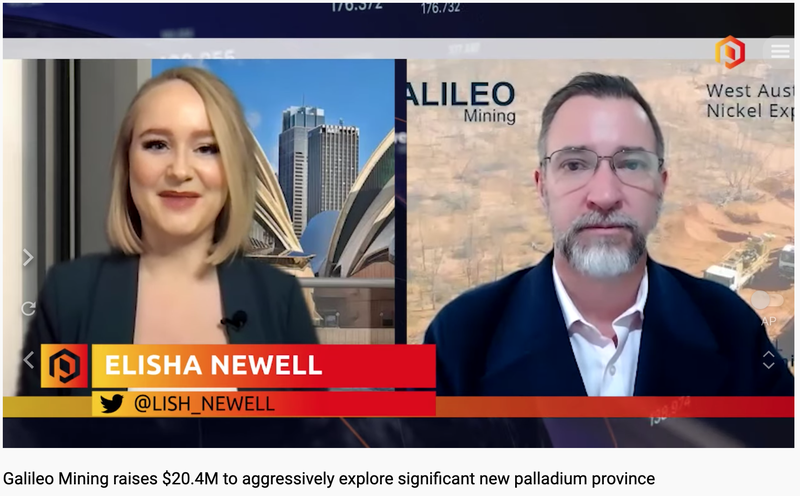
GAL’s deposit continues to grow
After announcing a major palladium-platinum discovery on 11th of May, GAL launched a second RC drilling program to the east to test how far the mineralised body extends.
Since our last note, we have seen GAL complete its second round of RC drilling at its new Callisto PGE discovery.
That second round of drilling was for a total of 16 drill-holes over ~3,939 metres.
We also noted that GAL was hitting sulphides in every drillhole it was putting into the ground and that its discovery was increasing in size to the east.
We then set our expectations up for what we wanted to see from the assay results, our expectations were as follows:
- Incredible case = 40m at over 3.0 g/tonne
- Bull case = Mineralisation keeps going, grade increasing to 2.5 g/tonne
- Base case = Grade above 1.0 g/tonne, 10m + intersection lengths
- Bear case = Grade below 1.0 g/tonne, intersection lengths reduce
On Monday this week, GAL released the first batch of assays from this round of drilling and put out its highest grade intercept to date.
Assays from four drill holes measured as high as 8.25 g/t Palladium and 1.94 g/t platinum over a one metre intercept in drillhole NRC275.
The highest grade palladium and platinum assays GAL has recorded so far.
Importantly, this high-grade palladium and platinum result showed that there was in fact potential for GAL to increase the overall grade for its project and that as GAL completes more drilling, higher grade zones may be discovered.
This is in contrast to current comparisons that are being made with the Platreef deposits in South Africa, where mineralisation starts to occur at depths as deep as 700m with grades as low as ~1g/t PGE.
Putting aside the potential for higher grade mineralisation throughout its discovery, GAL also confirmed that the deposit now extends along a strike of at least 300m to the east with mineralisation open in all directions meaning the discovery has more room to grow into.
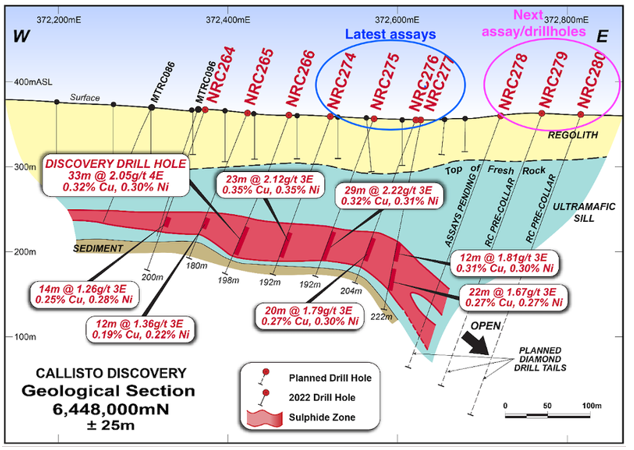
With grades remaining relatively high at close to 2g/t combined with the higher grade 8.25g/t intercept, we think the drilling program so far sits firmly within our bull case which was to see the deposit get bigger to the east and grades increase towards the 2.5g/t measure we had set.
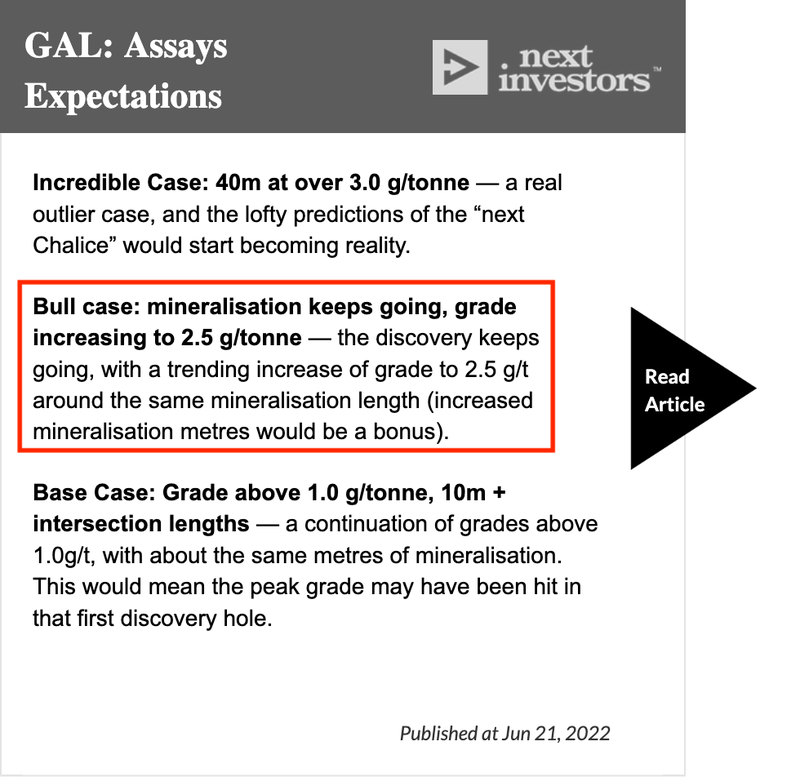
Later in the week, GAL followed this news up with an update confirming that its second round of drilling had been completed.
Importantly, GAL confirmed that all eleven additional drill holes had intersected sulphides that are geologically consistent with the first round of drilling.
With all of this drilling data combined, GAL has now managed to increase the mineralised sulphide zone of its PGE discovery so that it:
- Extends over a 300m strike length in the southern/central sections.
- Extends over a 200m strike length over the northern sections
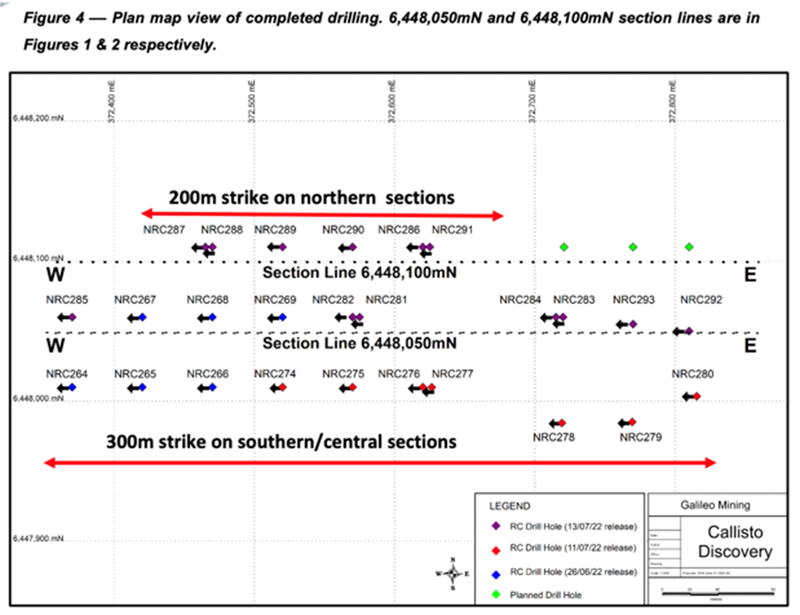
With the sulphide structure extending to the east we will be watching out for the assay results from these drill holes which GAL expects to receive in August.
We also note that GAL still has over 5km of potential strike to test at the Callisto discovery alone, over 10km of strike at the Mission Sill prospect and over 2km of strike at the Jimberlana prospects.
That's a combined ~17km of untested strike where GAL could increase the size of its Callisto PGE discovery or make entirely new discoveries across its 100% owned Norseman project in WA.
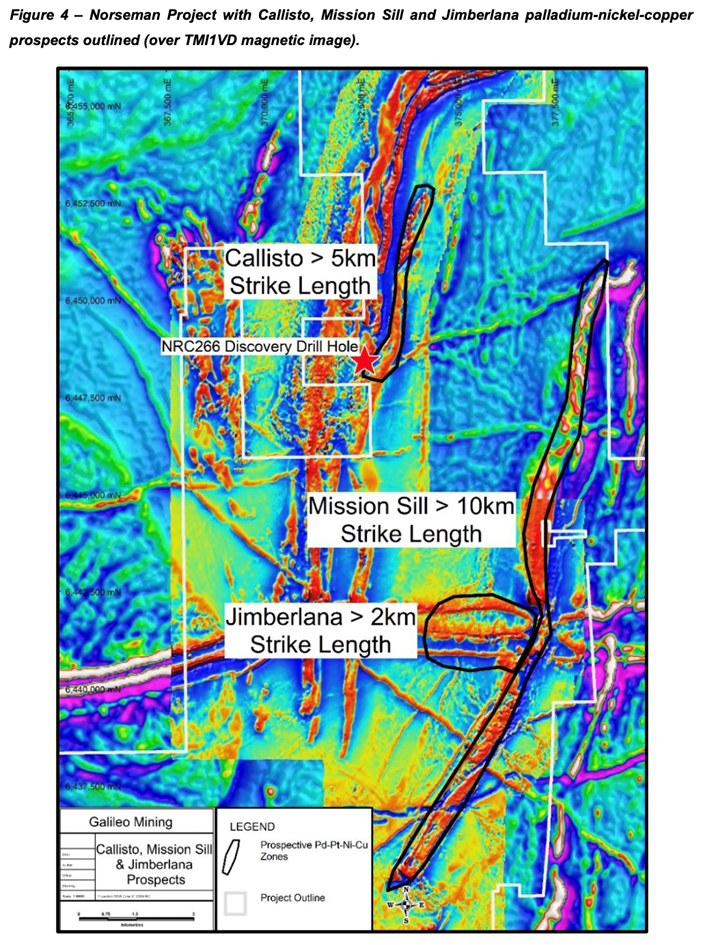
While exploration is ongoing for GAL, commodity markets are also reflecting the need for new supply.
The materials at Callisto — palladium, platinum and rhodium — are critical components in catalytic convertors to turn toxic gases emitted by cars into into less harmful nitrogen, carbon dioxide, and water vapour.
The conflict in Ukraine has only pushed prices higher since the market supply is dominated by Russia, which along with South Africa, account for 75% of global supply.
All this has combined to push the Palladium price to in excess of A$3,000/oz t.
All of this adds to the appeal for GAL’s discovery and could explain all of the buying from its major shareholders.
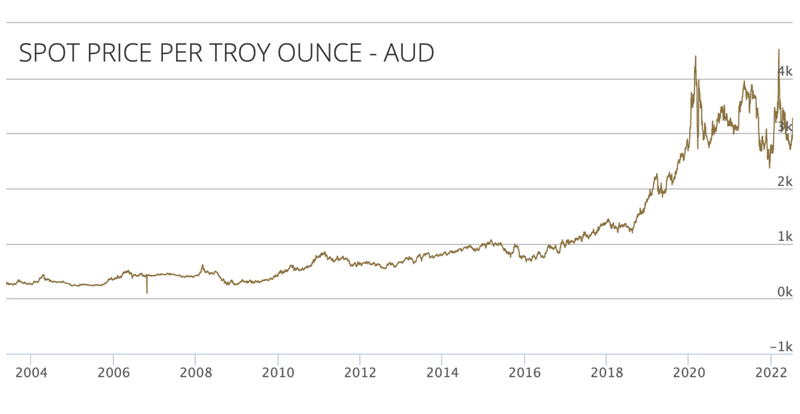
What’s Next for GAL?
Assay results from the second round of drilling 🔄
Yesterday GAL confirmed that the second round of drilling was fully complete.
GAL also confirmed that assays would start to come in August which means we won't have to wait long for the assay results.
In line with our previous expectations for assays we have set up our expectations as follows:
- Incredible case = 40m at over 3.0 g/tonne
- Bull case = Mineralisation keeps going, grade increasing to 2.5 g/tonne
- Base case = Grade above 1.0 g/tonne, 10m + intersection lengths
- Bear case = Grade below 1.0 g/tonne, intersection lengths reduce
Third round of RC + diamond drilling to commence 🔲
GAL now has plenty of cash in the bank to accelerate drilling at its Callisto PGE discovery.
In yesterday’s announcement, GAL confirmed that a new Program of Works had been approved by the Department of Mines which would allow for GAL to progress drilling programs across the ~2 kilometres of prospective strike length.
This means that GAL is cleared from a permitting perspective for at least the next round of drilling.
A third RC drill program is scheduled to begin at the end of this month, aiming to expand the known mineralisation along strike and to the west.
Diamond drilling is then planned to follow in August, focusing on the down dip zones to the east, so the potential for GAL to discover additional mineralisation is very high.
Exploration across other prospects 🔲
It is worth keeping in mind that GAL still has plenty of regional exploration prospects at its Norseman project including the Jimberlana prospect which has >2km of potential strike that can be tested and the Mission Sill prospect where GAL have >10km of strike to test.
GAL confirmed that future exploration programs would involve the following across these targets:
- RC drilling of geophysical/geochemical targets at the Jimberlana prospect.
- Geophysical surveying at the Mission Sill prospect.
- Aircore drilling 4km of strike at the Mission Sill prospect.
- RC drilling of geophysical/geochemical targets at the Mission Sill prospect.
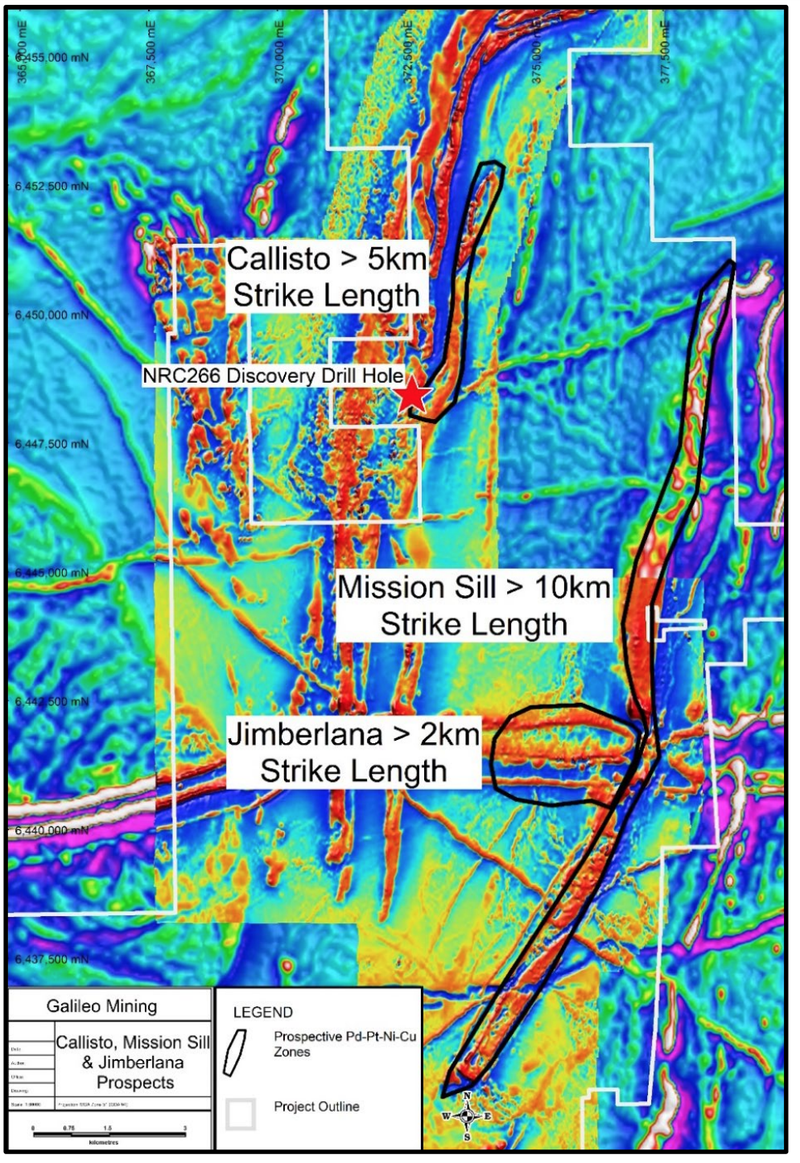
Investment Memo
In our GAL Investment Memo you’ll find:
- Key objectives for GAL in 2022
- Why we continue to hold GAL
- What the key risks to our investment thesis are
- Our investment plan
The ultimate purpose of the memo is to track the progress of our portfolio companies using our Investment Memo as a benchmark, throughout 2022.
General Information Only
This material has been prepared by StocksDigital. StocksDigital is an authorised representative (CAR 000433913) of 62 Consulting Pty Limited (ABN 88 664 809 303) (AFSL 548573).
This material is general advice only and is not an offer for the purchase or sale of any financial product or service. The material is not intended to provide you with personal financial or tax advice and does not take into account your personal objectives, financial situation or needs. Although we believe that the material is correct, no warranty of accuracy, reliability or completeness is given, except for liability under statute which cannot be excluded. Please note that past performance may not be indicative of future performance and that no guarantee of performance, the return of capital or a particular rate of return is given by 62C, StocksDigital, any of their related body corporates or any other person. To the maximum extent possible, 62C, StocksDigital, their related body corporates or any other person do not accept any liability for any statement in this material.
Conflicts of Interest Notice
S3 and its associated entities may hold investments in companies featured in its articles, including through being paid in the securities of the companies we provide commentary on. We disclose the securities held in relation to a particular company that we provide commentary on. Refer to our Disclosure Policy for information on our self-imposed trading blackouts, hold conditions and de-risking (sell conditions) which seek to mitigate against any potential conflicts of interest.
Publication Notice and Disclaimer
The information contained in this article is current as at the publication date. At the time of publishing, the information contained in this article is based on sources which are available in the public domain that we consider to be reliable, and our own analysis of those sources. The views of the author may not reflect the views of the AFSL holder. Any decision by you to purchase securities in the companies featured in this article should be done so after you have sought your own independent professional advice regarding this information and made your own inquiries as to the validity of any information in this article.
Any forward-looking statements contained in this article are not guarantees or predictions of future performance, and involve known and unknown risks, uncertainties and other factors, many of which are beyond our control, and which may cause actual results or performance of companies featured to differ materially from those expressed in the statements contained in this article. S3 cannot and does not give any assurance that the results or performance expressed or implied by any forward-looking statements contained in this article will actually occur and readers are cautioned not to put undue reliance on forward-looking statements.
This article may include references to our past investing performance. Past performance is not a reliable indicator of our future investing performance.

